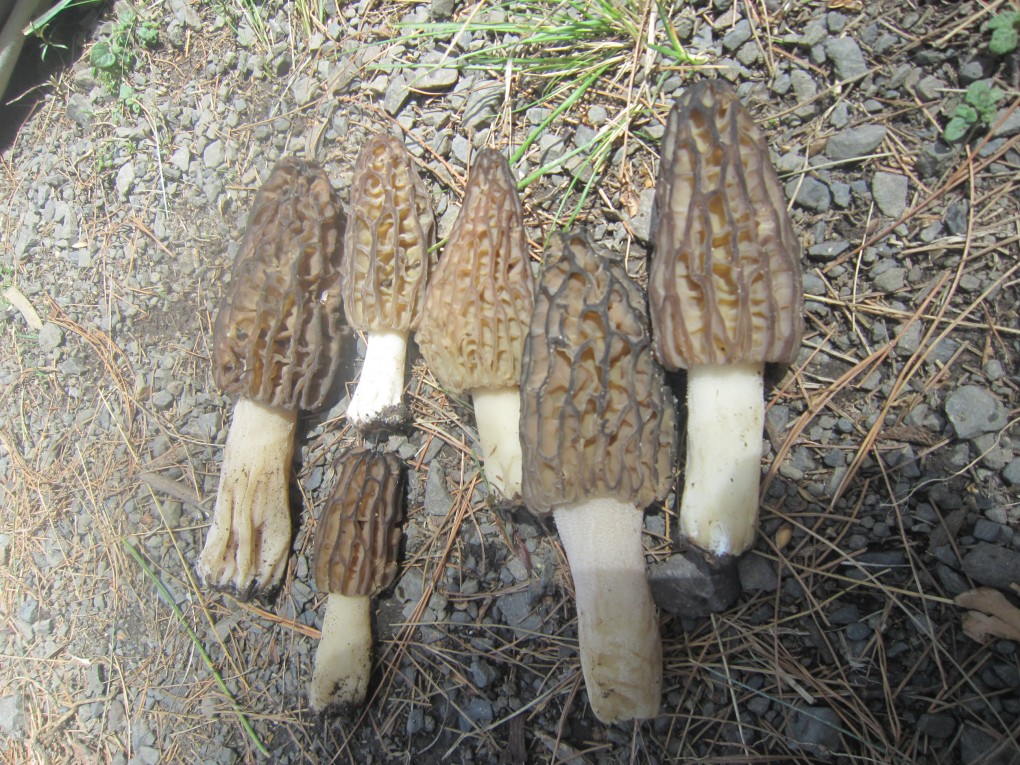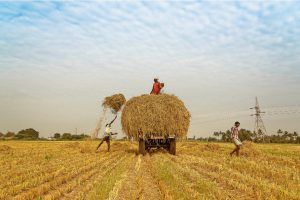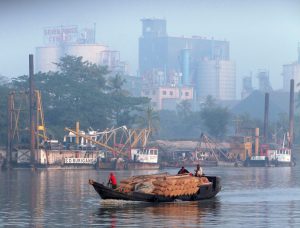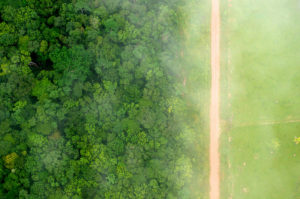The morel mushroom has been around for approximately 129 million years, growing in moist high altitude forests. It is unappreciated by most animals, except for humans, who enjoy the mushroom as an edible delicacy and for its medicinal properties. So much so that it is one of the most expensive vegetables in the world. In the Hindu Kush Himalayas of India and Pakistan – where they are called gucchi – the mushroom is worth its weight in gold. Poor villagers earn extra income from gathering the rare and valuable resource.
Empty handed morel mushroom collectors
Gulshoom Bibi, a 45 year old mother of four, remembers the good old days when she would supplement the income of her family by picking mushrooms from the nearby forest. Her family lives near the National Ayubia Park in Abbottabad, northern Pakistan. Her husband, Muhammad Ashan, is a watchman, who earns PKR 10,000 (USD 94) per month, so the extra income was much needed, but in the last few years the rare mushrooms, and Bibi’s extra income, have virtually disappeared.
“Every year in the month of March, my children and I collected between 10 to 15 kgs of morel mushrooms. This generated an additional income of about PKR 50,000 (USD 472), depending on the market rate and quality. Unfortunately for the last four – five years I am only able to find 2 or 3 kgs of the mushrooms,” Gulshoom Bibi told thethirdpole.net.
Last year collectors like Bibi found very few mushrooms, and the prices skyrocketed. Gulshoom Bibi received PKR 20,000 (USD 187) for the only 1 kilogramme of mushrooms. This is many times the price that she used to receive in 1999-2000, between PKR 4,000 – 5,000 (USD 38 – 47).
According to Bibi, the prices have not risen suddenly, but slowly, as the mushrooms have slowly disappeared from the forests. Shazia Sajid, a 50 year old mother of three, is another mushroom collector. She found none this year. The only things that she found were a few flowers of the mushrooms, nothing worth the while to sell.
The fluctuating weather and deforestation
According to Sabiha Zaman, who works with the World Wide Fund for Nature (WWF) in Pakistan, the mushrooms are victims of climate change. “In earlier years the collection season of the morel lasted for two months: March and April. Now the season has been reduced to a few days in March,” Sabiha Zaman told thethirdpole.net.
One of the reasons that morel mushrooms are so expensive is that they are hard to cultivate, and need precise conditions. “If in the month of December, January and February there is routine snowfall in the mountains,” Zaman said, “followed by routine rainfall in March, there is a good production of morel.”
Unfortunately climate change has brought with it inconsistent precipitation patterns in the region. The fluctuating patterns are having a seriously negative impact on everything from agriculture to apiculture.
Read: Pakistan is losing its honey bees to climate change
Professor Juma Muhammad, head of the Department of Environmental Science at the Shaheed Benazir Bhutto University in Dir, Khyber-Pakhtunkhwa province, has been researching morel mushrooms for over a decade. He fears that if the weather situation persists, the mushrooms may disappear entirely. “The situation is worse than we thought,” he told thethirdpole.net. “I know many spots in Swat where the morel used to grow, but in the last 3-4 years they have completely disappeared.”

Much of this is due to the much shorter duration of cold weather. Syed Mushtaq Ali Shah, the director of the Regional Meteorological Centre (RMC), Peshawar said, “30- 35 years ago the cold weather lasted for six months from October to the middle of April, but now it hardly lasts for three months, from the middle of November to the end of February.
According to the observations of RMC the last few years has had, “unexpected rain, snowfall and drought, with temperatures rising, especially in the months of February and March,” he told thethirdpole.net.
Climate change is not the only factor. Deforestation plays a significant role too. Muhammad Waseem, a conservation officer with WWF-Pakistan, said that the morel mushrooms grow, “in high altitudes in the Himalayan mountains and especially in a moist temperate forest habitat. Deforestation increases the temperature of high altitudes and reduces the winter season duration, thus affecting the production of morel mushrooms in Pakistan”. Unfortunately, although deforestation is widespread across Pakistan, the only government policy released has not been coordinated with the provinces, limiting its efficiency.
Read: Pakistan unveils first national forest policy without provincial government support
Local economies, and national exports, both suffer
The decline of the morel mushroom is having a very large impact on the people of Pakistan’s Khyber Pakhtunkhwa province. According to a research publication on ethno-botany by WWF-Pakistan published in 2003, 70% of morel mushrooms produced in the Himalayan region of Pakistan come from KP. “About 289,000 forest dwellers, mainly children and women, are involved with the collection and processing of morels in KP.” Another study from the University of Swat revealed that 15,000 kilogrammes, amounting to USD 343,000 per year, was exported from the remote Palas Valley in the Kohistan district of KP every year.
According to the locals in the Palas Valley, and in Swat, both areas have seen a rapid decline in the availability of morel mushrooms. This loss has also affected Pakistan’s big export companies.
Abdual Samad Kanchi is the chief executive of an export company that failed to make any sales this year. “Like every year, last year I received orders from France and Switzerland,” he told thethirdpole.net, “but when I collected details and sent my clients the prices they refused to buy, and told me that from India and Bangladesh they have good offers.”

For these large exporters, and the local communities, both of whom depended on the production of morel mushrooms in Pakistan’s Himalayan region, the future looks increasingly bleak.









